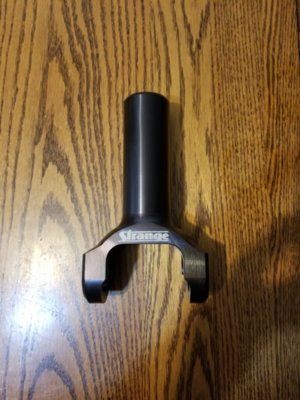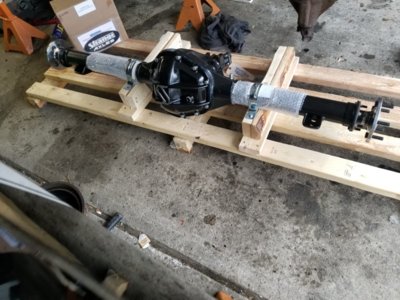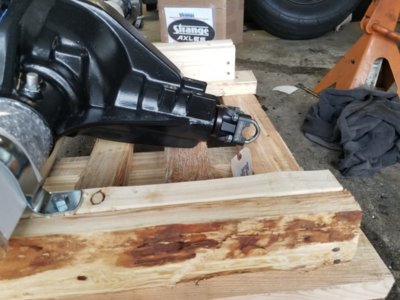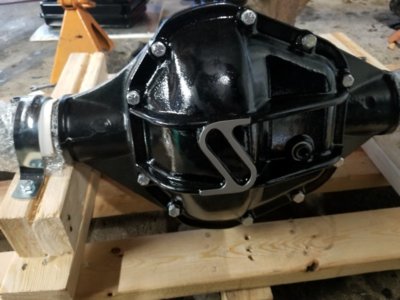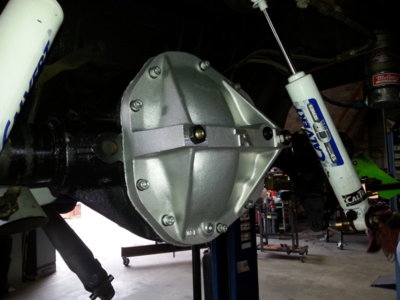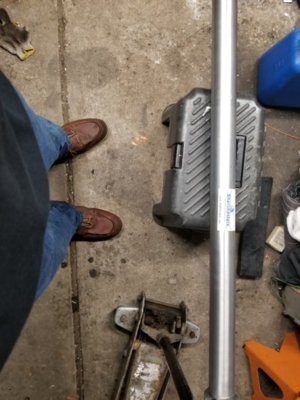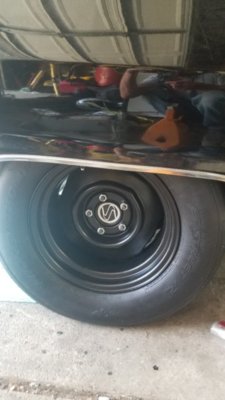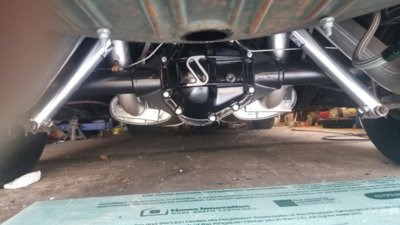Any word on getting your S60? Date?Took advantage of Cyber Monday saved almost 300$ on a new rear axle
You are using an out of date browser. It may not display this or other websites correctly.
You should upgrade or use an alternative browser.
You should upgrade or use an alternative browser.
Strange S60
- Thread starter Fizz66Coronet
- Start date
Fizz66Coronet
Well-Known Member
Fizz66Coronet
Well-Known Member
Mike Gaines
Well-Known Member
- Local time
- 1:46 PM
- Joined
- Apr 17, 2014
- Messages
- 2,101
- Reaction score
- 4,342
- Location
- Ahwahnee, (Fresno) California
Fizz66Coronet
Well-Known Member
- Local time
- 1:46 PM
- Joined
- Jan 16, 2011
- Messages
- 78,357
- Reaction score
- 125,698
- Location
- NorCal Sierras
nice rear  end assembly
end assembly 
 end assembly
end assembly 
I heard Strange is raising their pricing.
Fizz66Coronet
Well-Known Member
LemonWedge
Well-Known Member
So that would mean a 4* static pinion angle. Probably about right for a stock suspension. What kind of suspension are you on? If it were a cal-trac setup, I’d say you probably have a little more angle than you need, but not a ton. It really also depends on the front angle as well. You want equal and opposite angles on your two u-joints to have proper phasing. If the ends aren’t equal and opposite, you’ll know when you feel a harmonic vibration.
Fizz66Coronet
Well-Known Member
Ok I just went under the car and measured the trans angle. Its going opposite direction with the same degree as the axle yoke. I'm using Mopar performance XHD springs Viking shocks and just bought M/T Et street Type R. They want 5 heat cycles at 50 miles each time
LemonWedge
Well-Known Member
I’d say you should be set up pretty well, then. If it seems unhappy at all under acceleration, you can always add a little more angle with different shims. But I bet you’ll find it’s pretty happy with what you’ve described.
Maybe it is the wrong way to go about it, but what I do is put an angle finder on the crank pulley of my motor. Say that would be -2.5*. And then do the same on the rear axle. Say that is -1*. Your pinion angle would be -3.5* total. I don't check the driveshaft at all.
LemonWedge
Well-Known Member
Maybe it is the wrong way to go about it, but what I do is put an angle finder on the crank pulley of my motor. Say that would be -2.5*. And then do the same on the rear axle. Say that is -1*. Your pinion angle would be -3.5* total. I don't check the driveshaft at all.
In theory you are addressing pinion angle looking just these two things, and it usually works out if your rear end is in a somewhat stock location because the factory engineers designed the chassis and drivetrain with proper angles and u-joint phasing in mind. But there’s a reason your driveshaft has u-joints at both ends. The u-joints should be at equal and opposite angles, as well as phased opposite of each other to operate properly.
This video helps:
In theory you are addressing pinion angle looking just these two things, and it usually works out if your rear end is in a somewhat stock location because the factory engineers designed the chassis and drivetrain with proper angles and u-joint phasing in mind. But there’s a reason your driveshaft has u-joints at both ends. The u-joints should be at equal and opposite angles, as well as phased opposite of each other to operate properly.
This video helps:
It still is kind of a guessing game though isnt it? How can a guy tell how far up to your rear end is going under hard acceleration? That is where you want the parallel planes?
LemonWedge
Well-Known Member
Absolutely. And the fact that a leaf spring suspension is constantly moving becomes variable that’s hard to get a handle on. This is exactly why ladder bars are so popular with drag racers, because the variable is narrowed down, and a 4 link allows you to completely control the issue.
Again, my guess is that the numbers Fizz measured will work pretty well.
Again, my guess is that the numbers Fizz measured will work pretty well.
dvw
Well-Known Member
Start at 5 degrees down compared to the trans shaft angle when using leaf springs. That way it can be shimmed between 3-7 degrees easily which will definately get you in the ball park.
Doug
Doug
Similar threads
- Replies
- 7
- Views
- 720
- Replies
- 23
- Views
- 1K

